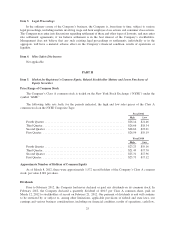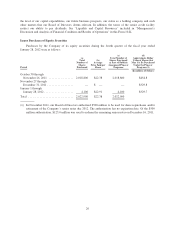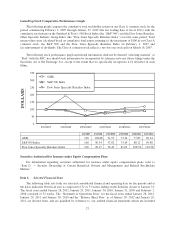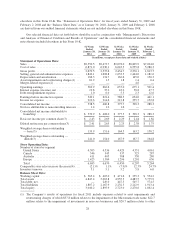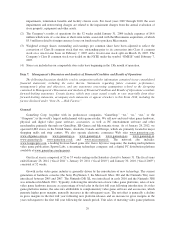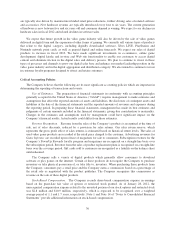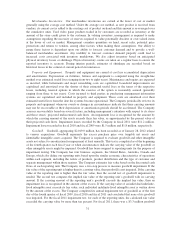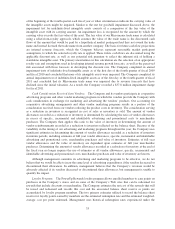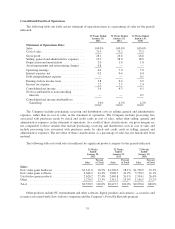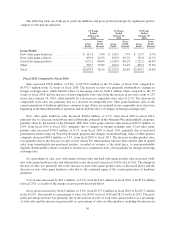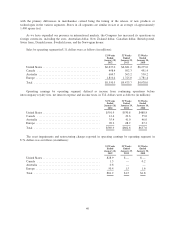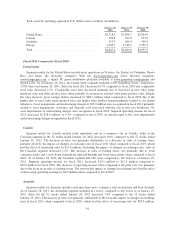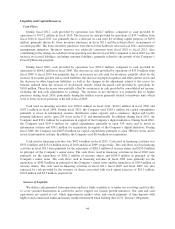GameStop 2011 Annual Report Download - page 50
Download and view the complete annual report
Please find page 50 of the 2011 GameStop annual report below. You can navigate through the pages in the report by either clicking on the pages listed below, or by using the keyword search tool below to find specific information within the annual report.loyalty program, prior experience with other customer incentives and data on other similar loyalty programs
as a basis to estimate the ultimate redemption rate of points earned. A weighted-average cost per point
redeemed is used to estimate future redemption costs. The weighted-average cost per point redeemed is
based on the Company’s most recent actual costs incurred to fulfill points that have been redeemed by its
loyalty program members and is adjusted as appropriate for recent changes in redemption costs, including
the mix of rewards redeemed. The Company continually evaluates its reserve methodology and assumptions
based on developments in redemption patterns, cost per point redeemed and other factors. Changes in the
ultimate redemption rate and weighted-average cost per point redeemed have the effect of either increasing
or decreasing the reserve through the current period provision by an amount estimated to cover the cost of
all points previously earned but not yet redeemed by loyalty program members as of the end of the reporting
period.
Lease Accounting. The Company’s method of accounting for rent expense (and related deferred rent
liability) and leasehold improvements funded by landlord incentives for allowances under operating leases
(tenant improvement allowances) is in conformance with GAAP. For leases that contain predetermined
fixed escalations of the minimum rent, we recognize the related rent expense on a straight-line basis and
include the impact of escalating rents for periods in which we are reasonably assured of exercising lease
options, and we include in the lease term any period during which the Company is not obligated to pay rent
while the store is being constructed, or “rent holiday.”
Income Taxes. The Company accounts for income taxes utilizing an asset and liability approach, and
deferred taxes are determined based on the estimated future tax effect of differences between the financial
reporting and tax bases of assets and liabilities using enacted tax rates. As a result of our operations in many
foreign countries, our global tax rate is derived from a combination of applicable tax rates in the various
jurisdictions in which we operate. We base our estimate of an annual effective tax rate at any given point in
time on a calculated mix of the tax rates applicable to our Company and to estimates of the amount of
income to be derived in any given jurisdiction. We file our tax returns based on our understanding of the
appropriate tax rules and regulations. However, complexities in the tax rules and our operations, as well as
positions taken publicly by the taxing authorities, may lead us to conclude that accruals for uncertain tax
positions are required. In accordance with GAAP, we maintain accruals for uncertain tax positions until
examination of the tax year is completed by the taxing authority, available review periods expire or
additional facts and circumstances cause us to change our assessment of the appropriate accrual amount.
34



